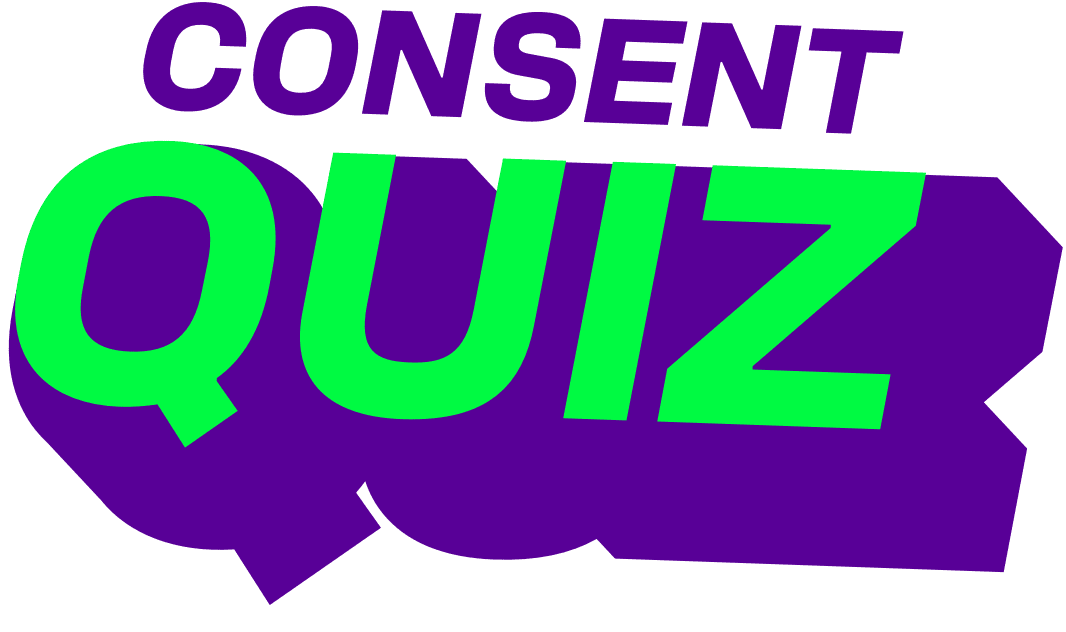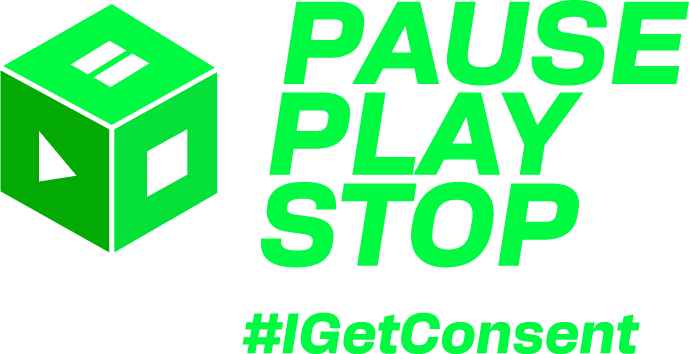Getting consent
Feeling confident about being able to get consent before engaging in any kind of sexual activity really matters!
How do I get consent?
What does it look or sound like when someone isn’t consenting? What about when they are? And most importantly, how do you know when to stop?
These are all important questions, especially as people can say “yes” and “no” in lots of different ways.
But getting consent shouldn’t be confusing. It’s actually super simple if you know which of the three actions – PAUSE, PLAY, STOP – to take and when.

PAUSE...
if you’re unclear what your partner is communicating
Before any sexual activity, you should first make sure you’ve got your partner's consent.
You should also always ask permission whenever you want to change the type or level of sexual activity (consent to a kiss isn't consent for anything else!)
Consent can be spoken and given aloud (verbal) or through the physical actions and sounds made by you or your partner (non-verbal).
There are times when it's important to ‘pause’ so that you can:
-
read your partner’s body language
-
listen to the words they’re using
-
talk about whether this is what you both want
-
decide together if it’s time to ‘stop’ or ‘play'
-
ask eachother if what you’re doing feels good
-

PLAY...
if it’s an active and enthusiastic “yes!”
Before you go ahead and ‘play’, you need to be clear that both you and your partner have given consent. You can make this easier all round by learning how to spot the signs that show your partner wants something as much as you.
Pay close attention to your partner's body language (non-verbal signs):
-
looking at you, smiling and nodding
-
appearing relaxed and happy
-
making enthusiastic sounds or noises
-
responding to you with their body
-
directing your hands where to touch them
-
kissing and touching you back
Listen out for what your partner is saying how they are saying it (verbal signs):
-
“I like that”
-
“that feels good”
-
“do that again”
-
“can we try…”
-
“do it this way” or "touch me here"
-
“I don’t like that, but I like this”
-
"faster!/slower!"
These signs are clear indicators that show you that your partner is happy with what is happening in the moment and has given their consent. Now it's time to 'play!'

STOP...
if it’s a “no”, “maybe" or even an “I don’t know”
When you’re making out, things can move very quickly. What might start out as a quick fumble can soon lead to full-blown sex in no time at all!
This is why it’s so important that you're able pick up on the signs that means it time to ‘stop!’
Watch your partner's body language (non-verbal signs):
-
being still, silent or turning away
-
not making eye contact
-
shaking, flinching or crying
-
have a rigid or tense body
-
asleep, passing out or unresponsive
-
confused, frozen or frightened facial expression
-
incoherent or slurred speech
-
pushing you away or turning away
Listen to what they’re saying (verbal signs) while being aware of what they're not saying:
-
“no!” or "stop!"
-
"I'm not sure"
-
“I’m scared" or "I'm worried"
-
“not now”
-
“I feel tired” or "I'm not in the mood"
-
"F*** off!"
-
"ouch!" or "that hurts"
-
"do I have to?"
-
"I don't like it"
These signs clearly show that your partner wants whatever is happening to stop and haven't given their consent. Whenever you see any of these signs, you must 'stop' straight away.
Why? Because any non-consensual sex/sexual activity is illegal – it’s rape or sexual assault.

What would you do?
Find out if you know when it's time to pause, play, stop.
Want to learn more about getting consent online and in real life?
#IGetConsent because it's important to respect each other's bodies and boundaries.
Jack, 17
Get involved
Share why you think it's important to get consent on your socials using:
